Author Biographies 3
 Natalie Babbitt
Natalie Babbitt
1932-2016
Natalie Babbitt grew up “only wanting to be an illustrator.” Born in Dayton, Ohio, she spent her time drawing and reading her favorite myths and fairy tales. Her mother gave her art lessons and “plenty of paper, paint and encouragement.” When she was nine years old, Babbitt came across an illustrated copy of Alice in Wonderland and got excited about having a career illustrating children’s literature. She studied art at Laurel School in Cleveland and Smith College in Massachusetts. Babbitt did not consider writing until much later, but her early passions would follow her to the creation of her own fairy tales.
Out of college, she married Samuel Fisher Babbitt and spent the next 10 years raising their children, Christopher, Tom and Lucy. She had begun work on a children’s book, The Forty-Ninth Magician, with her husband when he became president of Kirkland College in New York. While her husband did not have enough time for writing, her sister wrote a comic novel that called for too much rewriting. Babbitt learned three important things from their attempts: “You have to give writing your full attention. You have to like the revision process. And you have to like to be alone.”
She put these lessons to use when, with encouragement from her editor, she ventured into writing and illustrating her own children’s books. She thought she would do best writing in rhyme, and her first two books featured verse accompanied by large illustrations. Her next story, about a man searching for the perfect definition of “delicious,” required that she move into prose. She soon developed a taste for words as sharp as that of her characters, saying: “There’s always one best word, if you listen for it.” Several years later, Babbitt wrote her best-known book, Tuck Everlasting. Since then she has continued to write and illustrate and also collaborate with other authors.
Babbitt concentrated on art while she was growing up, but started to write so she could illustrate her own stories. She combines two art forms with a simplicity that few people could imagine, but describes it with familiarity and affection: “When you’re writing a story, it’s like watching a movie – you describe what you’re seeing in your head. And illustrating is the same thing – you draw what you see in your head. I’m not skillful enough to draw exactly what I see in my head, but I do the best I can.”
Babbitt died on October 31, 2016 in Camden, Connecticut.
Source: http://www.orrt.org/babbitt/
 Bibliography
Bibliography
Press your browser’s BACK button to return to the previous page.
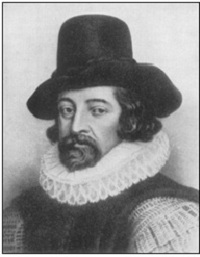 Sir Francis Bacon
Sir Francis Bacon
1561-1626
Francis Bacon, Lord Verulam and Viscount St. Alban’s, philosopher and statesman, was the youngest son of Sir Nicholas Bacon, Lord Keeper, by his second wife. He was born at York House in the Strand on January 22, 1561, and in his 13th year was sent with his elder brother Anthony to Trinity College, Cambridge. Here he first met Queen Elizabeth I, who was impressed by his precocious intellect and was accustomed to call him “the young Lord Keeper.”
In 1576 he entered Gray’s Inn and joined the embassy of Sir Amyas Paulet to France, where he remained until 1579. The death of his father in that year, before he had completed an intended provision for him, gave an adverse turn to his fortunes and rendered it necessary that he should decide upon a profession. He accordingly returned to Gray’s Inn and, after an unsuccessful attempt to induce Lord Burghley to give him a post at court, and thus enable him to devote himself to a life of learning, he gave himself seriously to the study of law and was called to the Bar in 1582. He did not, however, desert philosophy, and published a Latin tract, Temporis Partus Maximus (The Greatest Birth of Time), the first rough draft of his own system.
Two years later, in 1584, he entered the House of Commons as member for Melcombe, sitting subsequently for Taunton (1586), Liverpool (1589), Middlesex (1593) and Southampton (1597). In 1589 he received the Clerkship of the Star Chamber, a valuable appointment, into the enjoyment of which, however, he did not enter until 1608.
In 1596 he was made a Queen’s Counsel but missed the appointment of Master of the Rolls. In the next year (1597), he published the first edition of his Essays, 10 in number, combined with Sacred Meditations and The Coulours of Good and Evil.
The accession of James VI in 1603 gave a favorable turn to Bacon’s fortunes when he was knighted. In the first Parliament of the new king he sat for St. Alban’s and was appointed a Commissioner for Union with Scotland. In 1605, he published The Advancement of Learning dedicated, with fulsome flattery, to the king. In 1607, he was made Solicitor-General and wrote “Cogita et Visa,” a first sketch of the Novum Organum, followed in 1609 by The Wisdom of the Ancients.
The year 1618 saw him Lord Keeper, and the next Lord Chancellor and Baron Verulam, a title which, in 1621, he exchanged for that of Viscount St. Albans. Meanwhile, he had written The New Atlantis, a political romance, and in 1620 he presented to the king the Novum Organum, on which he had been engaged for 30 years, and which ultimately formed the main part of the Instauratio Magna.
Thenceforth he devoted himself to study and writing. In 1622 appeared his History of Henry VII, and the third part of the Instauratio; in 1623 he published History of Life and Death, the De Augmentis Scientarum, a Latin translation of The Advancement, and in 1625 the third edition of the Essays, now 58 in number. He also published Apophthegms and a translation of some of the Psalms.
In March 1626, he came to London and, shortly after, when driving on a snowy day, the idea struck him of making an experiment as to the antiseptic properties of snow, in consequence of which he caught a chill that resulted in his death on April 9, 1626.
Source: http://www.luminarium.org/sevenlit/bacon/bio.php
 Bibliography
Bibliography
Press your browser’s BACK button to return to the previous page.
 Joanna Baillie
Joanna Baillie
1762-1851
Joanna Baillie (September 11, 1762-February 23, 1851) was a Scottish poet and dramatist. Baillie was very well-known during her lifetime and, though a woman, intended her plays not for the closet but for the stage. Admired both for her literary powers and her sweetness of disposition, her cottage at Hampstead was the center of a brilliant literary society. Baillie died at the age of 88, her faculties remaining unimpaired to the last.
Baillie was born in 1762. Her early years were marked by a passion for the outdoors. Uninterested in books, she preferred playing in the garden, riding her pony, splashing on the banks of the River Clyde and listening to ghost stories by the fireside. Baillie’s own gift for narrative invention revealed itself early in stories told to her companions or acted out in impromptu amateur dramatics.
At the age of 10, Baillie was sent to Glasgow to attend a boarding school known for “transforming healthy little hoydens into perfect little ladies.” Her intellectual and artistic faculties were here stimulated and she displayed a talent for drawing, considerable musical ability and a love of mathematics. Above all, however, was her facility in the writing and acting of plays. It was in Glasgow that she visited the theatre for the first time, kindling a passion that was to continue for the rest of her life.
In London Joanna Baillie had access to literary society through her aunt, Anne Hunter, the wife of Dr. John Hunter. Anne Hunter was a poet of some renown and the hostess of a salon, which included among its circle Fanny Burney, Elizabeth Carter and Elizabeth Montagu. Encouraged by her aunt’s example, Baillie began to write poetry. While at Windmill Street, Baillie also began seriously writing drama.
By 1802 Joanna Baillie had moved from Colchester to Hampstead, then on the outskirts of London, where she and her sister passed the remainder of their lives.
Joanna Baillie was anxious that all her works, with the exception of her theological pamphlet, be collected in a single volume and had the satisfaction of seeing this “great monster book,” as she called it, which appeared in 1851, shortly before she died.
Though no longer robust, she had remained in good health until the end. She died in 1851 in Hampstead, having almost reached her 90th year.
Source: http://en.wikipedia.org/wiki/Joanna_Baillie
 Bibliography
Bibliography
Press your browser’s BACK button to return to the previous page.
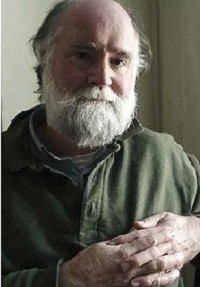 Nicholson Baker
Nicholson Baker
1957-
Nicholson Baker (born January 7, 1957) is a contemporary American writer of fiction and nonfiction. As a novelist, he often focuses on minute inspection of his characters’ and narrators’ stream of consciousness, and has written about such provocative topics as voyeurism and planned assassination. His fiction generally de-emphasizes narrative in favor of careful description and characterization.
Baker was born in New York City and spent much of his youth in the Rochester, New York area. He studied briefly at the Eastman School of Music and received a B.A. in philosophy from Haverford College. He lives today with his wife and two children in South Berwick, Maine. He received a National Book Critics Circle Award in 2001 for his nonfiction book, Double Fold: Libraries and the Assault on Paper.
Baker has been a fervent critic of what he perceives as libraries’ unnecessary destruction of paper-based media. He wrote several vehement articles in The New Yorker critical of the San Francisco Public Library for sending thousands of books to a landfill, the elimination of card catalogs and the destruction of old books and newspapers in favor of microfilm. In 1997, Baker received the San Francisco-based James Madison Freedom of Information Award in recognition of these efforts.
In 1999, Baker established a nonprofit corporation, the American Newspaper Repository, to rescue old newspapers from destruction by libraries. In 2001, he published Double Fold, in which he accuses certain librarians of lying about the decay of materials and being obsessed with technological fads at the expense of both the public and historical preservation.
In March 2008, Baker reviewed John Broughton’s Wikipedia: The Missing Manual in The New York Review of Books. In the review, Baker described Wikipedia’s beginnings, its culture and his own editing activities under the username “Wageless.” His article, “How I Fell in Love with Wikipedia,” was published in The Guardian newspaper in the UK on April 10, 2008.
Source: http://en.wikipedia.org/wiki/Nicholson_Baker
 Bibliography
Bibliography
Press your browser’s BACK button to return to the previous page.
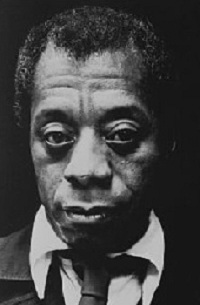 James Baldwin
James Baldwin
1924-1987
James Arthur Baldwin (August 2, 1924-December 1, 1987) was an African-American novelist, essayist, playwright, poet and social critic.
Baldwin’s essays, for instance “Notes of a Native Son” (1955), explore palpable yet unspoken intricacies of racial, sexual and class distinctions in Western societies, most notably in mid-20th century America, vis-a-vis their inevitable if unnamable tensions with personal identity, assumptions, uncertainties, yearning and questing. Some Baldwin essays are book length, for instance The Fire Next Time (1963), No Name in the Street (1972) and The Devil Finds Work (1976).
Baldwin attended the prestigious, mostly Jewish DeWitt Clinton High School in the Bronx where, along with Richard Avedon, he worked on the school magazine – Baldwin was its literary editor. After high school, Baldwin studied at The New School, finding an intellectual community.
In 1953, Baldwin’s first novel, Go Tell It on the Mountain, a semi-autobiographical bildungsroman, was published. Baldwin’s first collection of essays, Notes of a Native Son, appeared two years later. Baldwin continued to experiment with literary forms throughout his career, publishing poetry and plays as well as the fiction and essays for which he was known. His second novel, Giovanni’s Room, stirred controversy when it was first published in 1956 due to its explicit homoerotic content. Baldwin’s next two novels, Another Country and Tell Me How Long the Train’s Been Gone, are sprawling, experimental works dealing with black and white characters and with heterosexual, homosexual and bisexual characters.
Baldwin’s lengthy essay, “Down at the Cross” (frequently called “The Fire Next Time,” after the title of the book in which it was published), similarly showed the seething discontent of the 1960s in novel form. Baldwin’s next book-length essay, No Name in the Street, also discussed his own experience in the context of the later 1960s.
His two novels written in the 1970s, If Beale Street Could Talk and Just Above My Head, placed a strong emphasis on the importance of black families. He concluded his career by publishing a volume of poetry, Jimmy’s Blues, as well as another book-length essay, The Evidence of Things Not Seen, which was an extended meditation inspired by the Atlanta Child Murders of the early 1980s.
Early on December 1, 1987, Baldwin died from stomach cancer in Saint-Paul-de-Vence, France. He was buried at the Ferncliff Cemetery in Hartsdale, near New York City.
Source: http://en.wikipedia.org/wiki/James_Baldwin
 Bibliography
Bibliography
Press your browser’s BACK button to return to the previous page.
 Honore de Balzac
Honore de Balzac
1799-1850
Honore de Balzac (May 20, 1799-August 18, 1850) was a French novelist and playwright. His magnum opus was a sequence of short stories and novels collectively entitled La Comedie humaine, which presents a panorama of French life in the years after the 1815 fall of Napoleon.
Due to his keen observation of detail and unfiltered representation of society, Balzac is regarded as one of the founders of realism in European literature. He is renowned for his multi-faceted characters who are complex, morally ambiguous and fully human.
An enthusiastic reader and independent thinker as a child, Balzac had trouble adapting to the teaching style of his grammar school. His willful nature caused trouble throughout his life and frustrated his ambitions to succeed in the world of business. When he finished school, Balzac was an apprentice in a law office, but he turned his back on the study of law after wearying of its inhumanity and banal routine. Before and during his career as a writer, he attempted to be a publisher, printer, businessman, critic and politician; he failed in all of these efforts. La Comedie Humaine reflects his real-life difficulties and includes scenes from his own experience.
Balzac suffered from health problems throughout his life, possibly due to his intense writing schedule. His relationship with his family was often strained by financial and personal drama, and he ended several friendships over critical reviews.
In 1850 he married Ewelina Hanska, his longtime love; he died five months later.
Source: http://en.wikipedia.org/wiki/Honor%C3%A9_de_Balzac
 Bibliography
Bibliography
Press your browser’s BACK button to return to the previous page.
 Toni Cade Bambara
Toni Cade Bambara
1939-1995
Toni Cade Bambara, born Miltona Mirkin Cade (March 25, 1939-December 9, 1995), was an African-American author, documentary film-maker, social activist and college professor.
Bambara was born in New York City to Walter and Helen (Henderson) Cade. She grew up in Harlem, Bedford Stuyvesant (Brooklyn), Queens and New Jersey. In 1970 she changed her name to include the name of a West African ethnic group, Bambara.
Bambara graduated from Queens College with a B.A. in Theater Arts/English Literature in 1959, then studied mime at the Ecole de Mime Etienne Decroux in Paris, France. She became interested in dance before completing her master’s degree in American studies at City College, New York (from 1962), while serving as program director of Colony Settlement House in Brooklyn. She also worked for New York social services and as a recreation director in the psychiatric ward of Metropolitan Hospital. From 1965 to 1969 she was with the City College’s Search for Education, Elevation, Knowledge program. She taught English, published material and worked with SEEK’s black theatre group.
She was made assistant professor of English at Rutgers University’s new Livingston College in 1969, was visiting professor in Afro-American Studies at Emory University and at Atlanta University (1977), where she also taught at the School of Social Work until 1979. She was writer-in-residence at Neighborhood Arts Center (1975-79), at Stephens College at Columbia, Missouri (1976) and at Atlanta’s Spelman College (1978-79). From 1986 she taught film-script writing at Louis Massiah’s Scribe Video Center in Philadelphia.
Bambara participated in several community and activist organizations and her work was influenced by the Civil Rights and Black Nationalist movements of the 1960s. She went on propaganda trips to Cuba in 1973 and to Vietnam in 1975. She moved to Alabama with her daughter, Karma Bene, and became a founding member of the Southern Collective of African-American Writers. Bambara was diagnosed with colon cancer in 1993 and died of it in 1995 at age 56.
Source: http://en.wikipedia.org/wiki/Toni_Cade_Bambara
 Bibliography
Bibliography
Press your browser’s BACK button to return to the previous page.
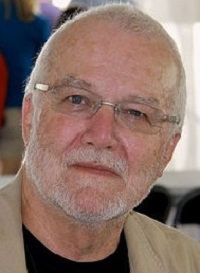 Russell Banks
Russell Banks
1940-2023
Russell Banks (born March 28, 1940) was an American writer of fiction and poetry.
Born in Newton, Massachusetts on March 28, 1940, he attended the University of North Carolina at Chapel Hill. He lived in upstate New York and was named a New York State Author. He was also Artist-in-Residence at the University of Maryland. He was married to the poet Chase Twichell. Banks was an American novelist best known for his “detailed accounts of domestic strife and the daily struggles of ordinary, often-marginalized characters.” His stories usually revolved around his own childhood experiences and often reflected “moral themes and personal relationships.”
Banks was a member of the International Parliament of Writers and a member of the American Academy of Arts and Letters. His work has been translated into 20 languages and received numerous international prizes and awards. He wrote fiction and nonfiction, including Dreaming Up America. His main works include the novels Continental Drift, Rule of the Bone, Cloudsplitter, The Sweet Hereafter and Affliction. The latter two novels were each made into feature films in 1997.
Many of Banks’ works reflect his working-class upbringing. His stories often show people facing tragedy and downturns in everyday life, expressing sadness and self-doubt, but also showing resilience and strength in the face of their difficulties. Banks also wrote short stories, some of which appeared in the collection The Angel on the Roof, as well as poetry. He also wrote a movie adaptation of Jack Kerouac’s On the Road for producer Francis Ford Coppola.
Banks was the 1985 recipient of the John Dos Passos Prize for fiction. Cloudsplitter was purported to have been a finalist for the Pulitzer Prize in fiction that eventually went to Michael Cunningham’s The Hours. He was elected a Fellow of the American Academy of Arts and Sciences in 1996.
Banks died from cancer at his home in Saratoga Springs, New York on January 7, 2023, at the age of 82.
Source: http://en.wikipedia.org/wiki/Russell_Banks
 Bibliography
Bibliography
Press your browser’s BACK button to return to the previous page.
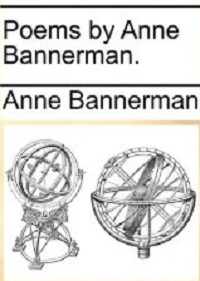 Anne Bannerman
Anne Bannerman
1765-1829
Anne Bannerman (1765-1829), poet, was born in Edinburgh to Isobel (nee Dick) and William Bannerman, a “running stationer” licensed to sell ballads in the streets. She was part of the Edinburgh literary circle that included John Leyden, Jessie Stewart and Thomas Campbell, and “remains significant for her Gothic ballads, as well as for her innovative sonnet series and her bold original odes.”
Bannerman’s early work was published, often pseudonymously, in periodicals, notably The Monthly Magazine, The Poetical Register and The Edinburgh Magazine, the latter of which was edited by her friend and supporter, Robert Anderson.
Her first volume, Poems (1800), was well-regarded but did not sell well. Her second collection, Tales of Superstition and Chivalry (1802), was published anonymously.
After the deaths of her mother and brother she struggled financially and was a governess for a period despite precarious health. Although various of her friends supported her and attempted to procure her a pension, such attempts were largely unsuccessful and she died in debt.
Source: http://en.wikipedia.org/wiki/Anne_Bannerman
 Bibliography
Bibliography
Press your browser’s BACK button to return to the previous page.
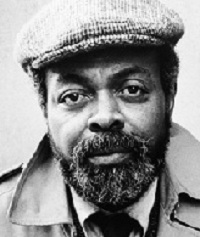 Imamu Amiri Baraka (LeRoi Jones)
Imamu Amiri Baraka (LeRoi Jones)
1934-2014
Born LeRoi Jones, Amiri Baraka (October 7, 1934, Newark, New Jersey) was an American writer of drama, essays and fiction.
Jones graduated from Howard University (B.A., 1953) and served in the U.S. Air Force. After military duty, he joined the Beat movement, attended graduate school and published his first major collection of poetry, Preface to a Twenty Volume Suicide Note, in 1961. In 1964, his play, Dutchman, appeared off-Broadway to critical acclaim. In its depiction of an encounter between a white woman and a black intellectual, it exposes the suppressed anger and hostility of American blacks toward the dominant white culture. After the assassination of Malcolm X, Jones took the name Amiri Baraka and began to espouse black nationalism.
In 1965 he founded the Black Arts Repertory Theatre in Harlem. He published much during this period, including Black Art (1966) and Black Magic (1969). In addition to poetry and drama, Baraka wrote several collections of essays, an autobiographical novel (The System of Dante’s Hell, 1965) and short stories. In the mid-1970s he became a Marxist, though his goals remained similar. “I [still] see art as a weapon and a weapon of revolution,” he said. “It’s just now that I define revolution in Marxist terms.” In addition to writing, Baraka taught at several American universities. The Autobiography of LeRoi Jones/Amiri Baraka was published in 1984.
He died Jan. 9, 2014 at a hospital in Newark at age 79.
Source: http://www.biography.com/people/imamu-amiri-baraka-9198235
 Bibliography
Bibliography
Press your browser’s BACK button to return to the previous page.
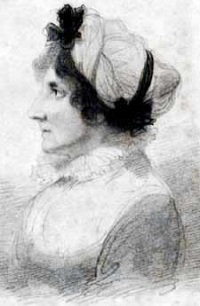 Anna Laetitia Barbauld
Anna Laetitia Barbauld
1743-1825
Born at Kibworth, Leicestershire, Barbauld was the eldest child of Rev. John and Jane Jennings Aikin. Her childhood was spent in the stimulating academic setting of her father’s school for boys, which nurtured her acute imagination and intellect. By the age of three she could read and as a young woman had mastered French, Italian, German and Latin. When she was 15, her father accepted the position of classical tutor at Warrington Academy in Lancashire, augmenting Barbauld’s opportunity for academic growth. At her younger brother John’s persuasion, she published her first volume of poetry in December 1772, Poems, which was an immediate success and went through four editions in its first year. The following year she published with equal success Miscellaneous Pieces in Prose (1773), which she coauthored with her brother.
In 1774, she married Rev. Rochement Barbauld and the couple moved to Palgrave in Suffolk, where Barbauld spent a good deal of her energy starting and managing a boys’ school with her husband. The Barbaulds were unable to have children of their own, so in 1777 they adopted their two-year-old nephew, Charles Aikin, who was the inspiration for her Lessons for Children, a series of stories for young readers published in 1778-1779. Her next and most remembered work was Hymns in Prose for Children, which was designed, as Barbauld says in the preface, to impress the “idea of God” on the infant mind. It was published in 1781, went through 30 editions by 1849 and was translated into five languages.
In 1787, the Barbaulds moved to Hampstead to be closer to John Aikin, and here she wrote and published several politically charged essays, including “An Appeal to the Opposers of the Repeal of the Corporation and Test Acts” (March 1790) and “Sins of the Government, Sins of the Nation” (1793). Also in 1793, she again collaborated with John to publish a collection of children’s fables entitled Evenings at Home.
In 1809 she began contributing to The Monthly Review and, later, she supplied biographical prefaces and edited 50 volumes of the British Novelists series (first edition, 1810). She also compiled a collection of the best English works for women readers entitled The Female Speaker in 1811. The year 1812 marks the publication of her satiric poem, “Eighteen Hundred and Eleven,” which gravely forecasted the fading of the power of the British Empire.
She continued to write letters and articles until her death in 1825, a few months shy of her 82nd birthday.
Source: http://www.orgs.muohio.edu/womenpoets/barbauld/bio.htm
 Bibliography
Bibliography
Press your browser’s BACK button to return to the previous page.
 Clive Barker
Clive Barker
1952-
Clive Barker, writer, producer, novelist, director and playwright, was born by Cesarean section at 1:00 a.m. on October 5, 1952, near Penny Lane, Liverpool. He first realized he could scare people with his words telling stories around a campfire with fellow Boy Scouts when he was 10 years old. It gave him “a lovely sense of power.”
He started out writing and directing plays for a fringe theater company he formed in London, producing works such as Frankenstein in Love, The History of the Devil and Colossus, a play about his favorite painter, Goya. These plays often delved into the erotic, the fantastical and the horrific, themes that he would later become known for in his literary work. Many of his plays have been collected in two books, Incarnations and Forms of Heaven.
In his spare time, Barker wrote short horror fiction, not expecting to be able to sell it. However, the first publisher he showed it to asked for more His stories were published in three volumes in 1984, under the title, The Books of Blood. Moderately successful in Great Britain, the books found wide critical acclaim in the United States and now appear in more than a dozen languages.
By 1987, two of Barker’s stories had been adapted into movies – “Rawhead Rex” and “Underworld.” He was highly dissatisfied with both of them and decided to direct something himself. The result was an adaptation of his story, “The Hellbound Heart” – a film called Hellraiser.
Today, Barker’s Seraphim Films is involved in CD-ROMs, live theater and art, as well as film and television production. Barker has done everything from major motion pictures for Universal to creating a line of superhero comics for Marvel called Razorline.
Source: https://en.wikipedia.org/wiki/Clive_Barker
 Bibliography
Bibliography
Press your browser’s BACK button to return to the previous page.
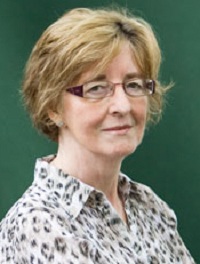 Pat Barker
Pat Barker
1943-
Pat Barker (born May 8, 1943) is an English writer and novelist. She has won many awards for her fiction, which centers around themes of memory, trauma, survival and recovery. Her work is described as direct, blunt and plainspoken.
Barker was born to a working-class family in Thornaby-on-Tees in the North Riding of Yorkshire, England, on May 8, 1943. She studied international history at the London School of Economics. After graduating in 1965, she returned home to nurse her grandmother, who died in 1971. In 1969, she was introduced in a pub to David Barker, a zoology professor and neurologist 20 years her senior, who left his marriage to live with her. They had two children together and were married in 1978 after his divorce. Their daughter, Anna Ralph, is now a novelist. Barker was widowed when David died in January 2009.
In her mid-20s, Barker began to write fiction. Her first three novels were never published. Her first three published novels – Union Street (1982), Blow Your House Down (1984) and Liza’s England (1986; originally published as The Century’s Daughter) – depicted the lives of working-class women in Yorkshire.
Following publication of Liza’s England, Barker turned her attention to World War I, which she had always wanted to write about due to her step-grandfather’s wartime experiences. This interest resulted in what is now known as the Regeneration Trilogy: Regeneration (1991), The Eye in the Door (1993) and The Ghost Road (1995).
In 1983, Barker won the Fawcett Society prize for fiction for Union Street. In 1993, she won the Guardian First Book Award for The Eye in the Door and in 1995 she won the Man Booker Prize for Ghost Road. In 2000, she was named a Commander of the Order of the British Empire (CBE).
Source: http://en.wikipedia.org/wiki/Pat_Barker
 Bibliography
Bibliography
Press your browser’s BACK button to return to the previous page.
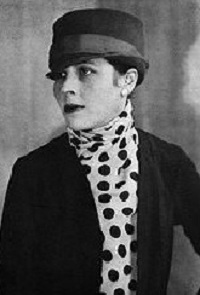 Djuna Barnes
Djuna Barnes
1892-1982
Djuna Barnes was born June 12, 1892, in Cornwall-on-Hudson, New York, on her family’s farm. Through her father and grandmother, Barnes gained a great appreciation of and dedication to the arts (the Barnes home was often frequented by such artistic greats as Jack London and Franz Liszt).
Barnes did not have a formal education because her father believed that the public school system was inadequate, and thus felt he felt that home schooling was much more beneficial. Her only formal schooling came after she left the home and moved to New York City.
In 1912 Barnes enrolled as a student at Pratt Institute (1912-13) and the Art Students League (1915-16). While at Pratt, she began her writing career as a reporter and illustrator for The Brooklyn Eagle. Barnes wrote mostly feature articles and interviews.
Barnes first published her poetry in 1915 as a collection of “rhythms and drawings” entitled The Book of Repulsive Women; four years later, three of her plays were produced by the Provincetown Players.
In 1923, Barnes published a collection of lyrical poems, stories, drawings and one-act plays that she entitled A Book.
In 1921, Barnes was sent to Paris by McCall’s as a correspondent and wrote articles for such magazines as Vanity Fair, Charm and The New Yorker; she stayed for almost 20 years.
While in France, she was heavily immersed in the modernist scene in Paris, where she befriended such beneficial patrons as Natalie Barney and Peggy Guggenheim. This circle of women, which included writers Mina Loy, Janet Flanner, Dolly Wilde and Gertrude Stein, became known as “The Academy of Women” (now referred to as “The Literary Women of the Left Bank.”). Barnes wrote a satirical work, Ladies Almanack, about this salon and the women who were a part of it.
Her second novel, Nightwood (1936), is her masterpiece of which T.S. Eliot wrote: “It is so good a novel that only sensibilities trained on poetry can wholly appreciate it.” In fact, it is often analyzed against the conventions of an extended poem rather than a short novel.
However, the one thing critics are not divided upon is the large sphere of influence that Barnes had upon other writers of her era. She is often compared to Joyce, Pynchon and Nathaniel West and the circle of her influence reaches out to include Truman Capote, William Goyen, Isak Dinesen, John Hawkes and Anais Nin.
Along with Nathaniel West she has been identified as one of the originators of Black Comedy and, as Donald J. Greiner writes, it “… stands out among post-World War I American novels as one of the first notable experiments with a type of comedy that makes the reader want to lean forward and laugh with terror.” Barnes also wrote a verse drama, The Antiphon (1958).
When she returned to the United States, she wrote little and lived a reclusive life in her apartment on Patchin Place in Greenwich Village, where she died in 1982. Creatures in an Alphabet (1982), a small book of alphabet rhymes for adults, and Smoke and Other Early Stories (1982) were published posthumously.
Source: http://www.studiocleo.com/librarie/barnes/biography.html
 Bibliography
Bibliography
Press your browser’s BACK button to return to the previous page.
 Julian Barnes
Julian Barnes
1946-
Novelist Julian Barnes was born in Leicester on January 19, 1946 and was educated at the City of London School and Magdalen College, Oxford. After working as a lexicographer on the Oxford English Dictionary, he began a career as a journalist, reviewing for The Times Literary Supplement, and became a contributing editor for The New Review in 1977. He was assistant literary editor and television critic for The New Statesman magazine (1977-81) and deputy literary editor for The Sunday Times (1980-82) before becoming television critic of The Observer, where he worked until 1986. He was also a London correspondent for The New Yorker magazine (1990-95). A collection of these articles was published as Letters from London, 1990-95 (1995).
Barnes’ first novel was Metroland (1980). It was followed by Before She Met Me (1982); Flaubert’s Parrot (1984); Staring at the Sun (1986); A History of the World in 10½ Chapters (1989); Talking It Over (1991); The Porcupine (1992); Cross Channel, a collection of short stories about English men and women living in France (1996); England, England (1998); Arthur and George (2005); and Love, etc. (2000). He also used to write a series of detective thrillers under the pseudonym Dan Kavanagh, featuring the private-eye, Duffy.
His book, Something to Declare: French Essays (2002), is a series of essays about French life and culture. He has also edited and translated the first English translation of the French 19th century novelist Alphonse Daudet’s In the Land of Pain (2002). The Pedant in the Kitchen (2003) was originally a series of articles for The Guardian. The Lemon Table (2004) is a collection of short fiction in which the characters are linked by their proximity to old age and death.
Julian Barnes lives in London. His latest book is Nothing to Be Frightened Of (2008), a memoir.
Source: https://en.wikipedia.org/wiki/Julian_Barnes
 Bibliography
Bibliography
Press your browser’s BACK button to return to the previous page.
 J.M. Barrie
J.M. Barrie
1860-1937
Sir James Matthew Barrie, 1st Baronet (May 9, 1860-June 19, 1937), was a Scottish author and dramatist, best remembered today as the creator of Peter Pan.
The child of a family of small-town weavers, he was educated in Scotland. He moved to London, where he developed a career as a novelist and playwright. There he met the Llewelyn Davies boys, who inspired him in writing about a baby boy who has magical adventures in Kensington Gardens (included in The Little White Bird), then to write Peter Pan, or The Boy Who Wouldn’t Grow Up, a “fairy play” about this ageless boy and an ordinary girl named Wendy who have adventures in the fantasy setting of Neverland. This play quickly overshadowed his previous work and, although he continued to write successfully, it became his best-known work, credited with popularizing the name Wendy, which was very uncommon previously.
Barrie unofficially adopted the Davies boys following the deaths of their parents. Before his death, he gave the rights to the Peter Pan works to Great Ormond Street Hospital, which continues to benefit from them.
Barrie died of pneumonia on June 19, 1937.
Source: http://en.wikipedia.org/wiki/J._M._Barrie
 Bibliography
Bibliography
Press your browser’s BACK button to return to the previous page.
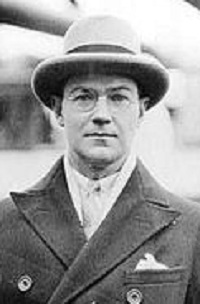 Philip Barry
Philip Barry
1896-1949
Philip James Quinn Barry (June 18, 1896-December 3, 1949) was an American playwright born in Rochester, New York, to James Corbett Barry and Mary Agnes Quinn Barry.
It started at the age of 9 when he had a story called “Tab the Cat” published by a Rochester newspaper. Only four years later, in 1918, he wrote a three-act drama called No Thoroughfare, his first mature attempt, but it was unproduced. When he was at Yale, he focused on poetry and short fiction while he worked for the Yale Literary Magazine.
In 1919, when he returned from London, the Yale Dramatic Club performed his one-act play, Autonomy. By the time he had enrolled in class by the end of the year, he was spending all of his time writing plays.
While back in Cambridge, he wrote The Jilts, which reflected his own life’s problems about how marital obligations might thwart an artistic career. It was originally titled The Thing He Wanted to Do and, in 1922, it won the Herndon Prize as the best play written in his class workshop. The play would later be renamed You and I and would open on Broadway in 1923. His next play was In a Garden, followed by White Wings in 1926.
In 1927, Barry went to France and began work on two new plays: Paris Bound and Cock Robin. His next show, originally titled The Dollar, was called Holiday. Next was Hotel Universe. Tomorrow and Tomorrow came out in 1931.
Though remembered for his comedies about manners, he also wrote serious dramas, often on religious themes. His 1927 play, John, is about the Baptist, and Barry himself described his 1938 allegory, Here Come the Clowns, as a study of “the battle with evil.” His best known work is The Philadelphia Story (1939).
Philip Barry died in New York City in 1949, aged 53, of a heart attack.
Source: http://en.wikipedia.org/wiki/Philip_Barry
 Bibliography
Bibliography
Press your browser’s BACK button to return to the previous page.
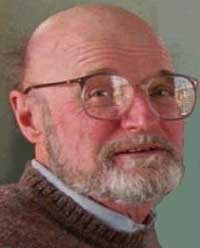 John Barth
John Barth
1930-2024
John Simmons Barth (May 27, 1930-April 2, 2024) was an American novelist and short-story writer, known for the postmodernist and metafictive quality of his work.
John Barth, called “Jack,” was born in Cambridge, Maryland. Barth had an older brother, Bill, and a twin sister, Jill. He briefly studied “Elementary Theory and Advanced Orchestration” at Juilliard before attending Johns Hopkins University, from which he received a B.A. in 1951 and an M.A. in 1952 (for which he wrote a thesis novel, The Shirt of Nessus).
Barth was a professor at The Pennsylvania State University from 1953 to 1965. During the “American high Sixties,” he moved to teach at SUNY/Buffalo from 1965 to 1973. In that period he came to know “the remarkable short fiction” of the Argentine Jorge Luis Borges, which inspired his collection Lost in the Funhouse. He then taught at Boston University (visiting professor, 1972-73) and Johns Hopkins University (1973-95) before retiring in 1995.
Barth began his career with The Floating Opera and The End of the Road, two short “realist” novels that deal wittily with controversial topics, suicide and abortion, respectively. They are straightforward realistic tales; as Barth later remarked, they “didn’t know they were novels.”
The Sot-Weed Factor (1960) was initially intended as the completing novel of a trilogy comprising his first two “realist” novels but, as a consequence of Barth’s maturation as a writer, it developed into a different project. The novel is significant as it marked Barth’s discovery of Postmodernism. Barth’s next novel, Giles Goat-Boy, was a speculative fiction based on the conceit of the university as universe.
The short story collection, Lost in the Funhouse, and the novella collection, Chimera, the latter of which won The National Book Award, are even more metafictional than their two predecessors, foregrounding the writing process and presenting achievements such as a seven-deep nested quotation. In LETTERS, Barth and his first six books’ characters interact. His 1994 work, Once upon a Time: A Floating Opera, reuses stock characters, stock situations and formulas.
While writing these books, Barth was also pondering and discussing the theoretical problems of fiction writing. In 1967, he wrote a highly influential and to some controversial essay considered a manifesto of postmodernism, “The Literature of Exhaustion” (1967). The essay was widely considered a statement of “the death of the novel.” Barth later insisted that he was merely making clear that a particular stage in history was passing and pointing to possible directions from there. In 1980, he wrote a followup essay, “The Literature of Replenishment,” to clarify the point.
Barth died under hospice care in Bonita Springs, Florida, at the age of 93.
Source: http://en.wikipedia.org/wiki/John_Barth
 Bibliography
Bibliography
Press your browser’s BACK button to return to the previous page.
 Donald Barthelme
Donald Barthelme
1931-1989
Donald Barthelme (April 7, 1931-July 23, 1989) was an American author known for his playful, postmodernist style of short fiction. Barthelme also worked as a newspaper reporter for The Houston Post, managing editor of Location magazine, director of the Contemporary Arts Museum in Houston (1961-1962), co-founder of Fiction (with Mark Mirsky and the assistance of Max and Marianne Frisch) and a professor at various universities. He also was one of the original founders of The University of Houston Creative Writing Program.
Donald Barthelme was born in Philadelphia in 1931. His father and mother were fellow students at the University of Pennsylvania. The family moved to Texas two years later, where Barthelme’s father became a professor of architecture at the University of Houston, where Barthelme would later study journalism.
In 1951, as a student, he wrote his first articles for The Houston Post. Two years later, Barthelme was drafted into the U.S. Army, arriving in Korea on July 27, 1953, the day of the signing of the Korean Armistice Agreement, which ended the Korean War. He served briefly as the editor of an Army newspaper before returning to the U.S. and his job at The Houston Post. Once back, he continued his studies in philosophy at the University of Houston. Although he continued to take classes until 1957, he never received a degree. He spent much of his free time in Houston’s Black jazz clubs, listening to musical innovators such as Lionel Hampton and Peck Kelly, an experience that influenced his later writing.
Barthelme’s relationship with his father was a struggle between a rebellious son and a demanding father. In later years they would have tremendous arguments about the kinds of literature in which Barthelme was interested and that he wrote. While in many ways his father was avant-garde in art and aesthetics, he did not approve of the postmodern and deconstruction schools. Barthelme’s attitude toward his father is delineated in his novels, The Dead Father and The King, as he is pictured in the characters King Arthur and Lancelot. Barthelme’s independence also shows in his moving away from the family’s Roman Catholicism (his mother was especially devout), a separation that troubled Barthelme throughout his life, as did the distance with his father. He seemed much closer to his mother and agreeable to her strictures.
Barthelme went on to teach for brief periods at Boston University, the University of Buffalo and the College of the City of New York, where he served as Distinguished Visiting Professor from 1974 to 1975.
He married four times. His second wife, Helen Barthelme, later wrote a biography entitled Donald Barthelme: The Genesis of a Cool Sound, published in 2001. With his third wife, Birgit, a Dane, he had his first child, a daughter named Anne, and near the end of his life he married Marion, with whom he had his second daughter, Kate. Marion and Donald remained married until his 1989 death from throat cancer.
Source: http://en.wikipedia.org/wiki/Donald_Barthelme
 Bibliography
Bibliography
Press your browser’s BACK button to return to the previous page.
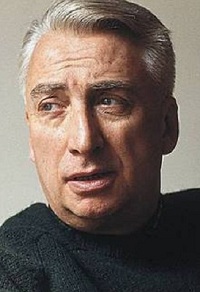 Roland Barthes
Roland Barthes
1915-1980
Roland Gerard Barthes (November 12, 1915-March 25, 1980) was a French literary theorist, philosopher, critic and semiotician. Barthes’ ideas explored a diverse range of fields and he influenced the development of schools of theory including structuralism, semiotics, social theory, anthropology and post-structuralism.
Barthes was born in the town of Cherbourg in Normandy. He showed great promise as a student and spent the period from 1935 to 1939 at the Sorbonne, where he earned a license in classical letters. He was plagued by ill health throughout this period, suffering from tuberculosis, which often had to be treated in the isolation of sanatoria. His repeated physical breakdowns disrupted his academic career, affecting his studies and his ability to take qualifying examinations. It also kept him out of military service during World War II.
His life from 1939 to 1948 was largely spent obtaining a license in grammar and philology, publishing his first papers, taking part in a medical study and continuing to struggle with his health. In 1948, he returned to purely academic work, gaining numerous short-term positions at institutes in France, Romania and Egypt. During this time, he contributed to the leftist Parisian paper, Combat, out of which grew his first full-length work, Writing Degree Zero (1953). In 1952, Barthes settled at the Centre National de la Recherche Scientifique, where he studied lexicology and sociology. During his seven-year period there, he began to write a popular series of bi-monthly essays for the magazine, Les Lettres Nouvelles, in which he dismantled myths of popular culture (gathered in the Mythologies collection that was published in 1957).
Barthes spent the early 1960s exploring the fields of semiology and structuralism, chairing various faculty positions around France and continuing to produce more full-length studies. Many of his works challenged traditional academic views of literary criticism and of renowned figures of literature.
By the late 1960s, Barthes had established a reputation for himself. During this time, he wrote his best-known work, the 1967 essay “The Death of the Author,” which would prove to be a transitional piece in its investigation of the logical ends of structuralist thought. In 1970, he produced his most prodigious work, the dense, critical reading of Balzac’s Sarrasine entitled S/Z. His last major work, “Camera Lucida,” is partly an essay about the nature of photography and partly a meditation on photographs of his mother.
On February 25, 1980, after leaving a lunch party hosted by Francois Mitterrand, Roland Barthes was knocked down by a laundry van while walking home through the streets of Paris. He got up unaided and made his way home on the tram. But, on the eve of March 25, after Barthes had smoked six after-dinner pipes, he went to ascend the stairs and dropped dead.
Source: http://en.wikipedia.org/wiki/Roland_Barthes
 Bibliography
Bibliography
Press your browser’s BACK button to return to the previous page.
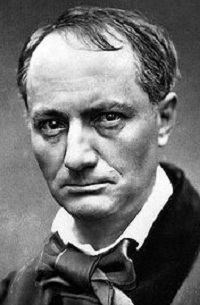 Charles Baudelaire
Charles Baudelaire
1821-1867
Charles Baudelaire (April 9, 1821-August 31, 1867) was a French poet who produced notable work as an essayist, art critic and pioneering translator of Edgar Allan Poe. His most famous work, Les Fleurs du mal (The Flowers of Evil), expresses the changing nature of beauty in modern, industrializing Paris during the 19th century.
Baudelaire was born in Paris, France, and baptized two months later at Saint-Sulpice Roman Catholic Church. He was educated in Lyon, where he boarded. Baudelaire was erratic in his studies, at times diligent, at other times prone to “idleness.” Later, he attended the Lycee Louis-le-Grand in Paris, studying law, a popular course for those not yet decided on any particular career. Baudelaire began to frequent prostitutes and may have contracted gonorrhea and syphilis during this period. He began to run up debts, mostly for clothes.
He returned to the taverns, where he began to compose some of the poems of Les Fleurs du Mal. At 21, he received a good-sized inheritance but squandered much of it within a few years. His family obtained a decree to place his property in trust, which he resented bitterly, at one point arguing that allowing him to fail alone financially would have been the one sure way of teaching him the value of maintaining well-ordered finances.
In the early 1850s, Baudelaire struggled with poor health, pressing debts and irregular literary output. He often moved from one lodging to another to escape creditors. He received many projects that he was unable to complete, though he did finish translations of stories by Edgar Allan Poe.
His first published work was his art review, “Salon of 1845,” which attracted immediate attention for its boldness. In 1846, he wrote his second “Salon” review, gaining additional credibility as an advocate and critic of Romanticism. His support of Delacroix as the foremost Romantic artist gained widespread notice. The following year Baudelaire’s novella, La Fanfarlo, was published.
Baudelaire next worked on a translation and adaptation of Thomas de Quincey’s Confessions of an English Opium Eater. Other works in the years that followed included: Petits Poemes en prose (Small Prose Poems); a series of art reviews published in The Pays, Exposition universelle (Country, World Fair); studies on Gustave Flaubert (1857); on Theophile Gautier (1858); various articles contributed to Eugene Crepet’s Poetes francais; Les Paradis artificiels: opium et haschisch (French Poets; Artificial Paradises: Opium and Hashish) (1860); and Un Dernier Chapitre de l’histoire des oeuvres de Balzac (A Final Chapter of the History of Works of Balzac, 1880).
By 1859, his illnesses, his long-term use of laudanum, his life of stress and poverty had taken a toll and Baudelaire had aged noticeably. He smoked opium and, while in Brussels, he began to drink to excess. He suffered a massive stroke in 1866 and paralysis followed. The last two years of his life were spent in a semi-paralyzed state in “maisons de sante” in Brussels and in Paris, where he died on August 31, 1867.
Source: http://en.wikipedia.org/wiki/Charles_Baudelaire
 Bibliography
Bibliography
Press your browser’s BACK button to return to the previous page.
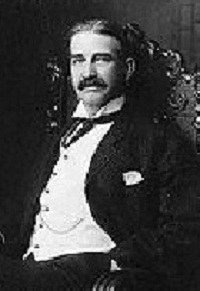 L. Frank Baum
L. Frank Baum
1856-1919
Lyman Frank Baum was born on May 15, 1856, near Syracuse, New York. His father, Benjamin, was a wealthy oil businessman, and young Frank (who disliked his first name and never used it) grew up in comfort. Because he had a weak heart, Baum led a quiet life as a child and was educated largely by tutors. A brief stay at a military academy was not successful and he returned home to indulge his taste for reading, writing, stamp collecting and chicken breeding. He also published two different monthly newspapers during his teenage years.
Baum grew up to become a man of great charm and many interests, yet he had little direction. He pursued a variety of careers ranging from acting to newspaper reporting to theatrical management to writing plays. One of his plays, The Maid of Arran, was a surprise smash hit, and Baum and his company toured with it throughout the United States and Canada in the early 1880s.
He moved to Chicago in 1891, where he was first a newspaper reporter but soon took a better paying job as a traveling salesman with a crockery firm. At the suggestion of his mother-in-law, Baum began to write down some of the stories he made up to tell his sons every evening when he was home. One of these stories, Mother Goose in Prose, was published in 1897. The book sold well and, on the advice of his doctor, Baum gave up his traveling job. Instead, he became the editor of a journal for window-dressers, which also did well.
Baum next decided to collaborate on a children’s book with a friend, the artist W.W. Denslow. Father Goose, His Book, published in 1899, was a bestseller. One of the five books he published in 1900, also based on stories he had told his sons and illustrated by Denslow, was The Wonderful Wizard of Oz, which immediately broke records for sales and made Baum a celebrity. At the suggestion of his publisher, Baum’s book, with substantial changes to fit the theatrical tastes of the day, was made into a musical in 1902, which also was a great success and toured the United States for years. A second Oz book, The Marvelous Land of Oz, a clever satire on the women’s suffrage movement, was published in 1904 and was very popular, and other Oz books followed, though none matched the originality or sales of the first two books. In addition, over the next two decades he wrote more than 35 non-Oz books under various pseudonyms and aimed at various audiences. Most of these were “pot-boilers,” but they did well financially and helped make Baum a wealthy man.
The Baums moved to Hollywood, California, in 1910 for his health and there built Ozcot, a large home with an impressive garden. Here he produced additional Oz books, to a total of 14. But with most of his fortune gone and his health failing, in his later years Baum lived quietly at Ozcot, gardening, writing stories and answering the hundreds of letters he received from Oz-struck children.
After a protracted gall bladder illness and a 24-hour coma, he died on May 6, 1919.
Source: http://www.answers.com/topic/l-frank-baum
 Bibliography
Bibliography
Press your browser’s BACK button to return to the previous page.
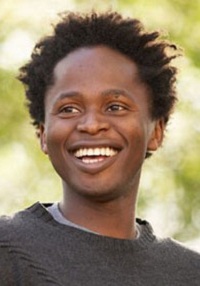 Ishmael Beah
Ishmael Beah
1980-
Ishmael Beah (born on November 23, 1980 in Mattru Jong, Bonthe District, Sierra Leone) is a former Sierra Leonean child soldier and the author of the published memoir, A Long Way Gone: Memoirs of a Boy Soldier.
In 1991, a vicious civil war overtook Sierra Leone, the country in which he was living. At the age of 13, he was forced to become a child soldier. According to Beah’s account, he fought for almost three years before being rescued by UNICEF. Beah fought for the army against the rebels. In 1997, due to the increasing violence, he fled Freetown with the help of UNICEF and found his way to New York City, where he lived with Laura Simms, his foster mother. In New York City, Beah attended the United Nations International School. After high school, he enrolled at Oberlin College and graduated in 2004 with a degree in Political Science.
While at college in Oberlin, Beah pursued advocacy work against the abuse of children during wartime. Beah currently works for the Human Rights Watch Children’s Division Advisory Committee, lives in Brooklyn and is considering attending graduate school.
Source: http://en.wikipedia.org/wiki/Ishmael_Beah
 Bibliography
Bibliography
Press your browser’s BACK button to return to the previous page.
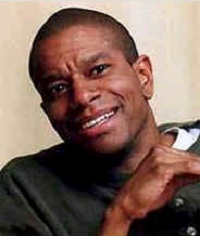 Paul Beatty
Paul Beatty
1962-
Paul Beatty (born in 1962 in Los Angeles) is a contemporary African-American author. Beatty received an MFA in creative writing from Brooklyn College and an MA in psychology from Boston University. His is a 1980 graduate of El Camino Real High School in Woodland Hills, California.
In 1990, Beatty was crowned the first-ever Grand Poetry Slam Champion of the Nuyorican Poets Cafe. One of the prizes for winning that championship title was the book deal that resulted in his first volume of poetry, Big Bank Takes Little Bank. This would be followed by another book of poetry, Joker, Joker, Deuce, as well as appearances performing his poetry on MTV and PBS. In 1993, he received a grant from the Foundation for Contemporary Arts Grants to Artists Award.
His first novel, The White Boy Shuffle, received a positive review in The New York Times. His second book, Tuff, received a positive notice in Time magazine. Most recently, Beatty edited an anthology of African-American humor called Hokum.
Source: http://en.wikipedia.org/wiki/Paul_Beatty
 Bibliography
Bibliography
Press your browser’s BACK button to return to the previous page.
 Francis Beaumont
Francis Beaumont
1584-1616
Francis Beaumont was born third son of Francis Beaumont, justice of the Court of Common Pleas, at Grace-Dieu, Leicestershire, in 1584. He entered Broadgates Hall (now Pembroke College), Oxford, in 1597 with his brothers Henry and John, but left without taking a degree and entered the Inner Temple to study law in 1600. It seems, however, that he studied little and there is no evidence of him ever practicing law.
Beaumont’s first published verse was prefaced to his brother John Beaumont’s The Metamorphosis of Tobacco (1602). The same year saw the publication of Salmacis and Hermaphroditus (1602), a sub-erotic Ovidian epyllion. It appears Beaumont began spending his time at the Mermaid Tavern, befriending Ben Jonson.
It is not known exactly when Beaumont met John Fletcher, nor whether they met at the Mermaid, through Jonson, or through a company for which both were writing, but their collaboration in playwriting would become famous. They may have started collaborating as early as 1605, the year in which Beaumont’s first play, the prose comedy The Woman Hater, was written for the popular children’s company, Boys of St. Paul’s. They were certainly working together from 1607 onward, even though it is now generally accepted that Beaumont was the sole author of The Knight of the Burning Pestle (1607), a witty comedy.
Beaumont and Fletcher apparently replaced Shakespeare around 1609 as chief dramatists of the King’s Men. In quick succession they wrote Philaster (c. 1609), The Maid’s Tragedy (c. 1610) and A King and No King (1611). Beaumont and Fletcher seem to have been very in touch with the popular taste and were able to cater to it brilliantly, writing one success after another. Next, they wrote Cupid’s Revenge (c. 1611), The Coxcomb (1612), The Scornful Lady (c. 1613) and The Captain (1613).
The promising partnership came to an end, however, when Beaumont married an heiress, Ursula Isley of Sundridge, in 1613 and left the stage. Of the 50 or so plays ascribed to Beaumont and Fletcher, only seven or eight can be confidently said to be Beaumont’s work in any significant part.
Francis Beaumont died suddenly of a fever in 1616.
Source: http://www.luminarium.org/sevenlit/beaumont/beaubio.htm
 Bibliography
Bibliography
Press your browser’s BACK button to return to the previous page.
 George Lewis Becke
George Lewis Becke
1855-1913
George Lewis Becke (or Louis Becke; June 18, 1855-February 18, 1913) was an Australian short-story writer and novelist. Becke was born at Port Macquarie, New South Wales, son of Frederick Becke, Clerk of Petty Sessions, and his wife, Caroline Matilda, nee Beilby. Becke was educated at Fort Street High School.
In 1869, Becke traveled to San Francisco with his brother Vernon and was away for 19 months. At 16, Becke was a stowaway on a ship bound for Samoa. In Apia he took a job as a bookkeeper in the store of Mrs. McFarlane, which he held until sometime after December 1872. Becke sailed a ketch, the E.A. Williams, to Mili Atoll to deliver it to William “Bully” Hayes, the notorious blackbirder. Becke arrived at Mili Atoll on January 17, 1874. He remained as a passenger on the Leonora until the ship was wrecked on March 15, 1874, during a storm while in Lele Harbour at Kosrae. It was seven months until HMS Rosario rescued Becke and the others.
From about April 1880, Becke was in the Ellice Islands (now Tuvalu) working with the Liverpool firm of John S. de Wolf and Co. on Nanumanga until the trading station was destroyed later that year in a cyclone. In February 1881 he opened his own store in Nukufetau. Later in 1881, a shipwreck on Beru Island in the Gilbert Islands caused him to lose all he had. Becke then worked in New Britain and was in Majuro by November 1882. For the next 10 years, he moved about the Gilbert Islands, Ellice Islands, Caroline Islands and Marshall Islands acquiring a knowledge of the customs and beliefs of the islanders and meeting palagi traders and beach-comers that he later used in his stories.
In January 1892, Becke returned to Sydney and began to contribute stories to The Bulletin, the first of which was “’Tis in the Blood,” appearing in the May 6, 1893 edition. A collection of these stories, By Reef and Palm, was published in England (1894), followed by The Ebbing of the Tide in 1896.
Becke went to London about the beginning of 1896, helped by Archibald and William Macleod of The Bulletin, who advanced him the sum of £200, and he remained in Europe for around 15 years, during which time a large number of collections of short stories and a few novels and stories for boys were published.
Becke was in Sydney again in the middle of 1909 and died of cancer there on February 18, 1913, working up until his death.
Source: http://en.wikipedia.org/wiki/George_Lewis_Becke
 Bibliography
Bibliography
Press your browser’s BACK button to return to the previous page.
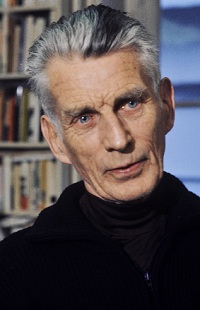 Samuel Beckett
Samuel Beckett
1906-1989
Samuel Barclay Beckett (April 13, 1906-December 22, 1989) was an Irish avant-garde novelist, playwright, theatre director and poet who lived in France for most of his adult life. He wrote in both English and French. His work offers a bleak, tragicomic outlook on human nature, often coupled with black comedy and gallows humor.
Beckett is widely regarded as among the most influential writers of the 20th century. Strongly influenced by James Joyce, he is considered one of the last modernists. As an inspiration to many later writers, he is also sometimes considered one of the first postmodernists. He is one of the key writers in what Martin Esslin called the “Theatre of the Absurd.” His work became increasingly minimalist in his later career.
Beckett was awarded the 1969 Nobel Prize in Literature “for his writing, which – in new forms for the novel and drama – in the destitution of modern man acquires its elevation.” He was elected Saoi of Aosdana in 1984.
Confined to a nursing home and suffering from emphysema and possibly Parkinson’s disease, Beckett died on December 22, 1989.
Source: http://en.wikipedia.org/wiki/Samuel_Beckett
 Bibliography
Bibliography
Press your browser’s BACK button to return to the previous page.
 William Thomas Beckford
William Thomas Beckford
1760-1844
William Thomas Beckford (October 1, 1760-May 2, 1844), usually known as William Beckford, was an English novelist, a profligate and consummately knowledgeable art collector and patron of works of decorative art, a critic, travel writer and sometime politician, reputed to be the richest commoner in England. He was Member of Parliament for Wells from 1784 to 1790, for Hindon from 1790 to 1795 and 1806 to 1820. He is remembered as the author of the Gothic novel Vathek, the builder of the remarkable lost Fonthill Abbey and Lansdown Tower (“Beckford’s Tower”), Bath, and especially for his art collection.
Beckford was born in the family’s London home at 22 Soho Square. At the age of 10, he inherited a fortune consisting of £1 million in cash, land at Fonthill in Wiltshire and several sugar plantations in Jamaica from his father. This allowed him to indulge his interest in art and architecture, as well as writing. He was briefly trained in music by Wolfgang Amadeus Mozart, but his drawing master Alexander Cozens had a much greater influence on him and Beckford continued to correspond with him for some years until their falling-out.
Having studied under Cozens and Sir William Chambers, Beckford journeyed in Italy in 1782 and promptly wrote a book on his travels: Dreams, Waking Thoughts and Incidents (1783). Shortly afterward came his best-known work, the Gothic novel, Vathek (1786). His other principal writings were: Memoirs of Extraordinary Painters (1780), a satirical work, and Letters from Italy with Sketches of Spain and Portugal (1835), full of brilliant descriptions of scenes and manners.
After his death at Lansdown Crescent on May 2, 1844, aged 84, his body was laid in a sarcophagus placed on an artificial mound, as was the custom of Saxon kings from whom he claimed to be descended.
Source: http://en.wikipedia.org/wiki/William_Thomas_Beckford
 Bibliography
Bibliography
Press your browser’s BACK button to return to the previous page.
 Thomas Lovell Beddoes
Thomas Lovell Beddoes
1803-1849
Thomas Lovell Beddoes (July 20, 1803-January 26, 1849) was an English poet and dramatist. Born in Clifton, Bristol, England, he was the son of Dr. Thomas Beddoes, a friend of Samuel Taylor Coleridge, and Anna, sister of Maria Edgeworth. He was educated at Charterhouse and Pembroke College, Oxford. He published in 1821 The Improvisatore, which he afterward endeavored to suppress. His next venture was The Bride’s Tragedy (1822), a blank verse drama that was published and well reviewed, and won for him the friendship of Barry Cornwall.
Beddoes’ work shows a constant preoccupation with death. In 1824, he went to Gottingen to study medicine, motivated by his hope of discovering physical evidence of a human spirit that survives the death of the body. He was expelled and then went to Wurzburg to complete his training. At this period, he became involved with radical politics; this got him into trouble. He was deported from Bavaria in 1833 and had to leave Zurich, where he had settled, in 1840. He continued to write, but published nothing.
He led an itinerant life after leaving Switzerland, returning to England only in 1846 before going back to Germany. He became increasingly disturbed and committed suicide by poison at Basel in 1849, at the age of 46. For some time before his death he had been engaged on a drama, Death’s Jest Book, which was published in 1850 with a memoir by his friend, T.F. Kelsall.
His Collected Poems were published in 1851.
Source: http://en.wikipedia.org/wiki/Thomas_Lovell_Beddoes
 Bibliography
Bibliography
Press your browser’s BACK button to return to the previous page.
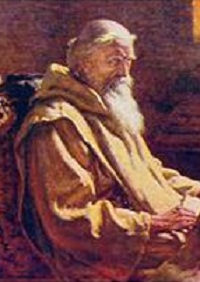 The Venerable Bede
The Venerable Bede
672/3-735
Bede (672/673-May 26, 735), also referred to as Saint Bede or The Venerable Bede, was a monk at the Northumbrian monastery of Saint Peter at Monkwearmouth, today part of Sunderland, England, and of its companion monastery, Saint Paul’s, in modern Jarrow, both in the Kingdom of Northumbria.
He is well known as an author and scholar, and his most famous work, Historia ecclesiastica gentis Anglorum (The Ecclesiastical History of the English People), gained him the title “The Father of English History.” In 1899, Bede was made a Doctor of the Church by Leo XIII, a position of theological significance; he is the only native of Great Britain to achieve this designation (Anselm of Canterbury, also a Doctor of the Church, was originally from Italy).
At the age of seven, he was sent to the monastery of Wearmouth by his family to be educated by Benedict Biscop and later by Ceolfrith. Four years later, in 686, plague broke out at Jarrow. The Life of Ceolfrith, written in about 710, records that only two surviving monks were capable of singing “with antiphons;” one was Ceolfrith and the other a young boy of 14, thought by most historians to have been Bede.
In about 692, in his 19th year, Bede was ordained a deacon by his diocesan bishop, John, who was Bishop of Hexham. The canonical age for the ordination of a deacon was 25; Bede’s early ordination may mean that his abilities were considered exceptional, but it is also possible that the minimum age requirement was often disregarded. In Bede’s 30th year (about 702) he became a priest.
In about 701 Bede wrote his first works, the De Arte Metrica and De Schematibus et Tropis; both were intended for use in the classroom. He continued to write for the rest of his life, eventually completing more than 60 books, most of which have survived.
He died on May 26, 735 and was buried at Jarrow. Cuthbert’s letter is mainly concerned with relating the last days of Bede and has interest for two things: One, that Bede was still struggling to complete works right before his death and, two, the relating of a poem that Bede composed on his deathbed. Bede’s remains may have been transferred to Durham Cathedral in the 11th century; his tomb there was looted in 1541 but the contents were probably reinterred in the Galilee chapel at the cathedral.
Source: http://en.wikipedia.org/wiki/Bede
 Bibliography
Bibliography
Press your browser’s BACK button to return to the previous page.
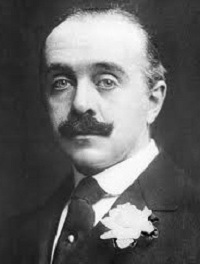 Max Beerbohm
Max Beerbohm
1872-1956
Sir Henry Maximilian “Max” Beerbohm (August 24, 1872-May 20, 1956) was an English essayist, parodist and caricaturist best known today for his 1911 novel, Zuleika Dobson.
Born in London, England, at 57 Palace Gardens Terrace, Henry Maximilian Beerbohm was the youngest of nine children of a Lithuanian-born grain merchant, Julius Ewald Edward Beerbohm, and Eliza Draper Beerbohm.
Beerbohm was educated at Charterhouse School and Merton College, Oxford, from 1890, where he was Secretary of the Myrmidon Club. It was at school that he began writing. Though he was an unenthusiastic student academically, Beerbohm became a well-known figure in Oxford social circles. He also began submitting articles and caricatures to London publications, which were received enthusiastically. In March 1893 he submitted an article about Oscar Wilde to The Anglo-American Times under the pen name, “An American.” Later in 1893 his essay, “The Incomparable Beauty of Modern Dress,” was published in the Oxford journal, The Spirit Lamp.
By 1894, having developed his personality as a dandy and humorist, and already a rising star in English letters, he left Oxford without a degree. His “A Defence of Cosmetics” (“The Pervasion of Rouge”) appeared in the first edition of The Yellow Book in 1894.
In 1895, Beerbohm went to America for several months as secretary to his brother Herbert Beerbohm Tree’s theatrical company. On his return to England, Beerbohm published his first book, The Works of Max Beerbohm (1896), a collection of his essays that had first appeared in The Yellow Book. His first piece of fiction, “The Happy Hypocrite,” was published in The Yellow Book in 1897.
From 1935 onward he was an occasional if popular radio broadcaster, talking about cars and carriages and music halls for the BBC. His radio talks were published in 1946 as Mainly on the Air.
Beerbohm’s best-known works include: A Christmas Garland (1912), a parody of literary styles; Seven Men (1919), which includes “Enoch Soames,” the tale of a poet who makes a deal with the Devil to find out how posterity will remember him; and Zuleika Dobson (1911), his only novel.
He died at the Villa Chiara, a private hospital in Rapallo, Italy, aged 83
Source: http://en.wikipedia.org/wiki/Max_Beerbohm
 Bibliography
Bibliography
Press your browser’s BACK button to return to the previous page.
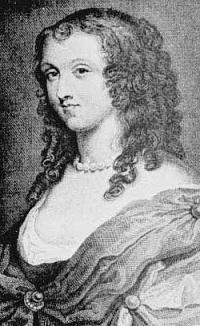 Aphra Behn
Aphra Behn
1640-1689
Aphra Behn (July 10, 1640-April 16, 1689) was a prolific dramatist of the English Restoration and was one of the first English professional female writers. Her writing contributed to the amatory fiction genre of British literature.
One of the first English women to earn her livelihood by authorship, Behn’s life is difficult to unravel and relate. Information regarding her, especially her early life, is scant, but she was almost certainly born in Wye, near Canterbury, to Bartholomew Johnson, a barber, and Elizabeth Denham. She was baptized on December 14, 1640.
In 1663, she visited an English sugar colony on the Suriname River, on the coast east of Venezuela (a region later known as Suriname). During this trip she is supposed to have met an African slave leader, whose story formed the basis for one of her most famous works, Oroonoko.
Though little is really known about Behn’s early years, evidence suggests that she may have had a Catholic upbringing. Her sympathy to the Catholics is further demonstrated by her dedication of her play, The Rover II, to the Catholic Duke of York, who had been exiled for the second time.
Shortly after her return to England in 1664, Aphra Johnson married Johan Behn, who was a merchant of German or Dutch extraction. Little conclusive information is known about their marriage, but it did not last for more than a few years because her husband died soon afterward.
By 1666, Behn had become attached to the Court, possibly through the influence of Thomas Culpepper and other associates of influence, where she was recruited as a political spy to Antwerp by Charles II. Her code name for her exploits is said to have been Astrea, a name under which she subsequently published much of her writing. Behn’s exploits were not profitable, however, as Charles was slow in paying (if he paid at all) for either her services or her expenses while abroad. Money had to be borrowed for Behn to return to London, where a year’s petitioning of Charles for payment went unheard and she ended up in a debtor’s prison. By 1669, an undisclosed source had paid Behn’s debts and she was released from prison, starting from this point to become one of the first women to write for a living.
She cultivated the friendship of various playwrights and, starting in 1670, she produced many plays and novels, as well as poems and pamphlets. Her most popular works included: The Rover; Love-Letters between a Nobleman and His Sister; and Oroonoko. In 1688, the year before her death, she published A Discovery of New Worlds, a translation of a French popularization of astronomy, Entretiens sur la Pluralite des Mondes, by Bernard le Bovier de Fontenelle, written as a novel in a form similar to her own work, but with her new, thoughtful, religiously oriented preface.
Aphra Behn died on April 16, 1689, and was buried in Westminster Abbey.
Source: http://en.wikipedia.org/wiki/Aphra_Behn
 Bibliography
Bibliography
Press your browser’s BACK button to return to the previous page.
 Edward Bellamy
Edward Bellamy
1850-1898
Edward Bellamy (March 26, 1850-May 22, 1898) was an American author and socialist, most famous for his utopian novel, Looking Backward, set in the year 2000.
Bellamy was born in Chicopee Falls, Massachusetts. His father was Rufus King Bellamy, a Baptist minister and a descendant of Joseph Bellamy. His mother was Maria Louisa (Putnam) Bellamy, a Calvinist.
He attended Union College but did not graduate. While there, he joined the Theta Chi Chapter of the Delta Kappa Epsilon fraternity. He studied law but left the practice and worked briefly in the newspaper industry in New York and in Springfield, Massachusetts. He left journalism and devoted himself to literature, writing both short stories and novels.
Bellamy’s second utopian novel, Equality, published in 1897, continues the story of Julian West as he adjusts to life in the future. Although Equality was less successful commercially or culturally than its prequel, a short story, “The Parable of the Water-Tank,” from Equality, was popular with a number of early American socialists, reprinted in various editions as a propaganda pamphlet.
Several hundred additional utopian novels were published in the U.S. from 1889 to 1900, due in part to the popularity of Looking Backward.
Bellamy died from tuberculosis at his childhood home in Chicopee Falls.
Source: http://en.wikipedia.org/wiki/Edward_Bellamy
 Bibliography
Bibliography
Press your browser’s BACK button to return to the previous page.
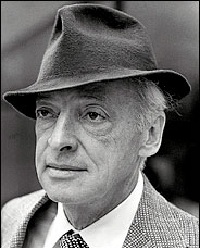 Saul Bellow
Saul Bellow
1915-2005
Saul Bellow was born of Russian immigrant parents in Lachine, Quebec, Canada, on July 10, 1915. He learned to speak Hebrew, Yiddish and French as well as English. When he was nine his family moved to Chicago, Illinois, and to this city Bellow remained deeply devoted. He was raised in a strict Jewish household and his mother, who died when he was 15, wanted him to become a rabbi. After her death he drifted away from religious study and began to read a wide variety of books. He quickly decided he wanted to be a writer.
After two years at the University of Chicago, Bellow transferred to Northwestern University and obtained a bachelor’s degree in anthropology in 1937. He had wanted to study English literature but was warned that many universities would not hire Jewish professors to teach the subject. Four months after enrolling as a graduate student at the University of Wisconsin, he quit school forever.
During the next decade Bellow held a variety of writing jobs – with the Works Progress Administration (WPA) Writers’ Project, the editorial department of the Encyclopaedia Britannica, the Pestalozzi-Froebel Teachers College and the Merchant Marine. His first story was published in 1941 and he published two novels. Dangling Man (1944), in the form of a journal, concerns a young Chicagoan waiting to be drafted into military service. The Victim (1947), a more ambitious work, describes a New Yorker struggling with domestic and religious conflicts. Both novels received mixed reviews.
After World War II, Bellow joined the University of Minnesota English Department, spent a year in Paris, France, and in Rome, Italy, and taught briefly at New York University, Princeton University and Bard College. Above all, however, he concentrated on writing fiction. With the publication of The Adventures of Augie March (1953), Bellow won his first National Book Award. He followed it in 1956 with Seize the Day, a collection of three short stories, a one-act play and a novella. The novella, the title of which is also the title of the volume, is about one day in the life of a middle-aged New Yorker facing a major domestic crisis. Some critics feel that this collection was Bellow’s finest work.
In Henderson the Rain King (1959), Bellow described an American millionaire’s flight from a tangled marriage and his adventures in Africa. His next novel, Herzog (1964), won him a second National Book Award and international fame.
In 1962, Bellow became a professor at the University of Chicago, a post that allowed him to continue writing fiction and plays. The Last Analysis had a brief run on Broadway in 1964. Six short stories, collected in Mosby’s Memoirs and Other Stories (1968), and his sixth novel, Mr. Sammler’s Planet (1969), elevated Bellow’s reputation. Humboldt’s Gift (1975) added the Pulitzer Prize and the Nobel Prize for Literature to Bellow’s list of awards.
Bellow’s later novels did not receive the same praise. The Dean’s December (1982) and More Die of Heartbreak (1987) retained his style, but some disliked the bitter tone that had never shown up in previous Bellow works. After 1987, Bellow released a number of novellas that met with similarly mixed reviews.
In 1995, Bellow nearly died after eating poisonous fish in the Caribbean. After a long, slow recovery, he wrote Ravelstein, a novel, which was released in 2000.
Source: http://www.notablebiographies.com/Ba-Be/Bellow-Saul.html
 Bibliography
Bibliography
Press your browser’s BACK button to return to the previous page.
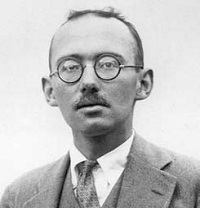 Stephen Vincent Benet
Stephen Vincent Benet
1898-1943
Stephen Vincent Benet (July 22, 1898-March 13, 1943) was an American author, poet, short story writer and novelist. Benet is best known for his book-length narrative poem of the American Civil War, John Brown’s Body (1928), for which he won a Pulitzer Prize in 1929, and for two short stories, “The Devil and Daniel Webster” and “By the Waters of Babylon.” In 2009, The Library of America selected Benet’s story, “The King of Cats,” for inclusion in its two-century retrospective of American Fantastic Tales, edited by Peter Straub.
Benet was born into an Army family in Fountain Hill, Pennsylvania. His father and namesake led the U.S. Army Ordnance Corps, 1874-1891, with the rank of brigadier general.
Benet spent most of his boyhood in Benicia, California. At about age 10, Benet was sent to the Hitchcock Military Academy. He graduated from The Albany Academy in Albany, New York, and Yale University, where he was “the power behind the Yale Lit,” according to Thornton Wilder, a fellow member of the Elizabethan Club. Benet published his book at age 17. He was awarded an M.A. in English upon submission of his third volume of poetry in lieu of a thesis. Benet was also a part-time contributor for the early Time magazine.
Benet helped solidify the place of the Yale Series of Younger Poets Competition and the Yale University Press during his decade-long judgeship of the competition. Benet published the first volumes of James Agee, Muriel Rukeyser, Jeremy Ingalls and Margaret Walker.
Benet’s fantasy short story, “The Devil and Daniel Webster” (1937), won an O. Henry Award. He furnished the material for Scratch, a one-act opera by Douglas Moore. The story was filmed in 1941 and shown originally under the title All That Money Can Buy. Benet also wrote a sequel, “Daniel Webster and the Sea Serpent,” in which real-life historic figure Webster encounters the Leviathan of biblical legend.
Benet maintained a home (commonly referred to as Benet House), in Augusta, Georgia. Part of Augusta College (now Augusta State University), it was declared a National Historic Landmark in 1971.
Benet died of a heart attack in New York City at the age of 44. He was awarded a posthumous Pulitzer Prize in 1944 for “Western Star,” an unfinished narrative poem on the settling of America. It was a line of Benet’s poetry that gave the title to Dee Brown’s famous history of the destruction of Native American tribes by the United States, Bury My Heart at Wounded Knee.
He also adapted the Roman myth of the rape of the Sabine women into the story, “The Sobbin’ Women,” which in turn was adapted into the movie musical, Seven Brides for Seven Brothers.
John Brown’s Body was staged on Broadway in 1953 in a three-person dramatic reading featuring Tyrone Power, Judith Anderson and Raymond Massey, directed by Charles Laughton.
Benet fathered three children. His brother, William Rose Benet, was a poet, anthologist and critic who is largely remembered for his desk reference, Benet’s Reader’s Encyclopedia (1948).
Source: http://en.wikipedia.org/wiki/Stephen_Vincent_Ben%C3%A9t
 Bibliography
Bibliography
Press your browser’s BACK button to return to the previous page.
 Roberto Benigni
Roberto Benigni
1952-
Filmmaker, writer and actor Roberto Benigni was born on October 27, 1952 in Arezzo, Tuscany, Italy. At the age of 10 he became a member of a troubadour act in Tuscany, improvising songs and poetry. He then moved to Rome and started working with various experimental theatre groups.
His film debut as an actor came with Berlinger ti Volgio Bene (1976, Have You Berliner). Later films as an actor include Il Minestrone (1980), La Voce Della Luna (1989, The Voice of the Moon), The Son of the Pink Panther (1993) and Asterix et Obelix Contre Cesar (1999, Asterix and Obelix Take on Caesar).
In 1982, he made his directorial debut with Tu Mi Turbi (You Disturb Me), a television monologue that criticized Pope John Paul II and brought Benigni widespread fame. Later films as a director include Il Piccolo Diavolo (1988, The Little Devil) and Mostro (1994, Monster).
In 1997, he made his most successful film to date, La Vita e Bella (Life is Beautiful), which he wrote, starred in and directed.
Benigni is one of Italy’s most popular comics.
Source: https://en.wikipedia.org/wiki/Roberto_Benigni
 Bibliography
Bibliography
Press your browser’s BACK button to return to the previous page.
 David Benioff
David Benioff
1970-
David Benioff is an American writer. Born David Friedman in New York City, he changed his name to David Benioff, his mother’s maiden name. He is the youngest of three children.
A Dartmouth College alumnus and distinguished member of Phi Delta Alpha Fraternity, he worked as a club bouncer and at 22 became a high school English teacher at Poly Prep in Brooklyn, New York City. In addition, he attended the University of California, Irvine, and received a Master of Fine Arts degree in the creative writing program.
While working as a high school English teacher, he wrote the book, The 25th Hour. He then wrote a collection of short stories, titled When the Nines Roll Over (and Other Stories) in 2004.
Benioff drafted a screenplay of the mythological epic, Troy (2004), for which Warner Bros. Pictures paid him $2.5 million. He also wrote the script for the psychological thriller, Stay (2005) and the screenplay for The Kite Runner, a film based on the book bearing the same name.
He wrote the screenplay for the X-Men spinoff, X-Men Origins: Wolverine.
In 2008, his second novel, City of Thieves, A Novel, was released.
Source: http://en.wikipedia.org/wiki/David_Benioff
 Bibliography
Bibliography
Press your browser’s BACK button to return to the previous page.
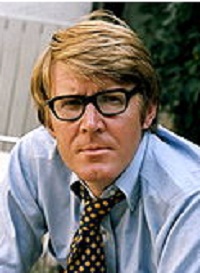 Alan Bennett
Alan Bennett
1934-
Alan Bennett (born May 9, 1934) is a British playwright, screenwriter, actor and author. Born in Leeds, he attended Oxford University, where he studied history and performed with The Oxford Revue. He stayed to teach and research mediaeval history at the university for several years. His collaboration as writer and performer with Dudley Moore, Jonathan Miller and Peter Cook in the satirical revue, Beyond the Fringe, at the 1960 Edinburgh Festival brought him instant fame. He gave up academia and turned to writing full-time, his first stage play, Forty Years On, being produced in 1968.
His output includes: The Madness of George III, and its film incarnation, The Madness of King George; the series of monologues, Talking Heads; the play, The History Boys; and popular audio books, including his readings of Alice’s Adventures in Wonderland and Winnie-the-Pooh.
Source: http://en.wikipedia.org/wiki/Alan_Bennett
 Bibliography
Bibliography
Press your browser’s BACK button to return to the previous page.
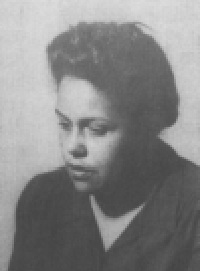 Gwendolyn Bennett
Gwendolyn Bennett
1902-1981
Gwendolyn B. Bennett (July 8, 1902-May 30, 1981) was an African-American writer who contributed to Opportunity, which chronicled cultural advancements in Harlem. Though often overlooked, she herself made considerable accomplishments in poetry and prose. She is perhaps best known for her short story, “Wedding Day.”
Bennett was born in Giddings, Texas, to Joshua and Maime Bennett. She spent her early childhood in Wadsworth, Nevada, on the Paiute Indian Reservation, where her parents taught in the Indian Service for the Bureau of Indian Affairs. In 1906, when Bennett was four years old, her family moved to 1454 T Street Northwest, Washington D.C., so Joshua could study law and Maime could train to be a beautician. The move eventually led to her parents’ divorce when Bennett was seven years old. Maime gained custody of Bennett, but her father kidnapped her and they lived in hiding, along with her stepmother, Marechal Neil, along the East Coast and Pennsylvania. Her father eventually took them to New York, where she attended Brooklyn’s Girls’ High from 1918 to 1921. While attending Girls’ High, Bennett was awarded first place in a schoolwide art contest and was the first African-American to join the literary and drama societies. She wrote her high school play and was also featured as an actress. She also wrote both the class graduation speech and the words to the graduation song.
After her graduation in 1921, she began to take art classes at Columbia University and the Pratt Institute. In her undergraduate studies, Bennett’s poem, “Heritage,” was published in Crisis in November 1923. In December of the same year, the poem was included in Opportunity, a magazine published by the National Urban League. She graduated from both institutes in 1924 and in June of that year started teaching design, watercolor and crafts at Howard University. A scholarship enabling her to study abroad in Paris, at Sorbonne, was awarded to her in December 1924.
When Bennett left Paris in 1926, she headed back to New York to become the assistant to the editor for Opportunity. During her time at Opportunity she received the Barnes Foundation fellowship for her work. Later during the same year she returned to Howard University once again to teach fine arts. She remained the assistant to the editor at Opportunity and was given the chance to publish her own articles to discuss literary and fine arts. She titled her column The Ebony Flute and used it to distribute news about the many creative thinkers who were involved with the Harlem Renaissance.
Bennett was one of the prominent figures of the Harlem Renaissance. Her heritage is a main theme in her poetry. Her works reflect the shared themes and motifs of the Harlem Renaissance: Racial pride, rediscovery of Africa, recognition of African music and dance.
Bennett faded from the public eye during the late 1940s but she remained close to the hub of busy Harlem in New York and her fellow writers. She began working for the Consumers Union during the later years of her life. She retired in 1968 and moved with her husband to Kutztown, Pennsylvania, where they opened an antique shop. Her husband died in 1980 due to heart failure; Bennett died on May 30, 1981, at the Reading County Hospital.
Source: http://en.wikipedia.org/wiki/Gwendolyn_B._Bennett
 Bibliography
Bibliography
Press your browser’s BACK button to return to the previous page.
 Jeremy Bentham
Jeremy Bentham
1748-1832
British economist Jeremy Bentham is most often associated with his theory of utilitarianism, the idea that all social actions should be evaluated by the axiom: “It is the greatest happiness of the greatest number that is the measure of right and wrong.” Counter to Adam Smith’s vision of “natural rights,” Bentham believed that there were no natural rights to be interfered with.
Trained in law, Bentham never practiced, choosing instead to focus on judicial and legal reforms. His reform plans went beyond rewriting legislative acts to include detailed administrative plans to implement his proposals. In his plan for prisons, workhouses and other institutions, Bentham devised compensation schemes, building designs, worker timetables and even new accounting systems. A guiding principle of Bentham’s schemes was that incentives should be designed “to make it each man’s interest to observe on every occasion that conduct which it is his duty to observe.” Interestingly, Bentham’s thinking led him to the conclusion, which he shared with Smith, that professors should not be salaried.
In his early years Bentham professed a free-market approach. He argued, for example, that interest rates should be free from government control. By the end of his life he had shifted to a more interventionist stance. He predated Keynes in his advocacy of expansionist monetary policies to achieve full employment and advocated a range of interventions, including the minimum wage and guaranteed employment.
His publications were few, but Bentham influenced many during his lifetime and lived to see some of his political reforms enacted shortly before his death in London at the age of 84.
Source: http://www.econlib.org/library/Enc/bios/Bentham.html
 Bibliography
Bibliography
Press your browser’s BACK button to return to the previous page.
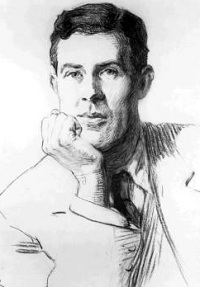 Edmund Clerihew Bentley
Edmund Clerihew Bentley
1875-1956
Edmund Clerihew Bentley (July 10, 1875-March 30, 1956) was a popular English novelist and humorist of the early 20th century and the inventor of the “clerihew,” an irregular form of humorous verse on biographical topics.
Born in London and educated at St. Paul’s School and Merton College, Oxford, Bentley worked as a journalist on several newspapers, including The Daily Telegraph. His first published collection of poetry, titled Biography for Beginners (1905), popularized the clerihew form; it was followed by two other collections, in 1929 and 1939. His detective novel, Trent’s Last Case (1913), was much praised, numbering Dorothy L. Sayers among its admirers, and with its labyrinthine and mystifying plotting can be seen as the first truly modern mystery. The success of the work inspired him, after 23 years, to write a sequel, Trent’s Own Case (1936). There was also a book of Trent short stories, Trent Intervenes. Several of his books were reprinted in the early 2000s by House of Stratus.
From 1936 until 1949, Bentley was president of the Detection Club and contributed to both of their radio serials, broadcast in 1930 and 1931 and published in 1983 as The Scoop and Behind the Screen.
He died at the age of 80 in 1956.
Source: http://en.wikipedia.org/wiki/Edmund_Clerihew_Bentley
 Bibliography
Bibliography
Press your browser’s BACK button to return to the previous page.
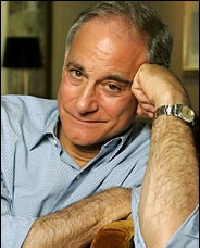 John Berendt
John Berendt
1939-
John Berendt (born December 5, 1939) is an American author, known for writing the bestselling nonfiction book, Midnight in the Garden of Good and Evil, which was a finalist for the 1995 Pulitzer Prize in General Nonfiction.
Berendt grew up in Syracuse, New York, where both of his parents were writers. As an English major at Harvard University, he worked on the staff of The Harvard Lampoon. He graduated in 1961 and moved to New York City to pursue a journalism career. He was an associate editor of Esquire from 1961 to 1969, editor of New York magazine from 1977 to 1979 and a columnist for Esquire from 1982 to 1994.
Berendt published Midnight in the Garden of Good and Evil in 1994 and became an overnight success; the book spent a record-breaking 216 weeks on The New York Times bestseller list – still, to this day, the longest-standing bestseller of The Times. The story, unsettling and real, broke down the idea of the quintessential phenomenon of a true American city only to reveal its quirks – its man walking an invisible dog; its voice of the drag queen; a high society man in its elite community – all that, somehow, unravels a murder mystery. Virtually seeming like a novel and reading like a tale, the nonfictional story is about the real-life events surrounding the murder trial of James Arthur Williams in Savannah, Georgia. Berendt’s poignancy, sophistication and sleekness are instrumental to the literature of the 21st century. Midnight was adapted into a 1997 film, directed by Clint Eastwood, receiving mixed reviews. John Cusack plays a character loosely based on Berendt.
Berendt’s second book, The City of Falling Angels, was published in September 2005. It chronicles interwoven lives in Venice in the aftermath of the fire that destroyed the La Fenice opera house.
Source: http://en.wikipedia.org/wiki/John_Berendt
 Bibliography
Bibliography
Press your browser’s BACK button to return to the previous page.
 Carl Bernstein and Bob Woodward
Carl Bernstein and Bob Woodward
1944-/1943-
Carl Bernstein (born February 14, 1944), an American investigative journalist, and Robert Upshur Woodward (born March 26, 1943), an American investigative journalist, nonfiction author and currently an associate editor of The Washington Post, teamed up in 1972 at The Post and did the majority of the most important news reporting on the Watergate scandal. These scandals led to numerous government investigations, the indictment of a vast number of White House Officials such as H.R. Haldeman, John Ehrlichman, Charles Colson and John Mitchell, and the eventual resignation of President Richard Nixon.
Gene Roberts, the former executive editor of The Philadelphia Inquirer and former managing editor of The New York Times, has called the work of Woodward and Bernstein “maybe the single greatest reporting effort of all time.”
For their role in breaking the scandal, Woodward and Bernstein received many awards; their work helped earn The Post a Pulitzer Prize for Public Service in 1973.
In a 1977 Rolling Stone article, Bernstein revealed that more than 400 U.S. journalists had been employed by the Central Intelligence Agency (Operation Mockingbird), secretly carrying out assignments and publishing news stories for them.
Woodward continued to work for The Washington Post after his reporting on Watergate. He has since written more than a dozen books about American politics, most of which have topped bestseller lists.
Sources:
http://en.wikipedia.org/wiki/Carl_Bernstein
and
http://en.wikipedia.org/wiki/Bob_Woodward
 Bibliography
Bibliography
Press your browser’s BACK button to return to the previous page.
 Beroul
Beroul
1100s
Beroul was a Norman poet of the 12th century. He wrote Tristan, a Norman-language version of the legend of Tristan and Iseult, of which a certain number of fragments (approximately 3,000 verses) have been preserved; it is the earliest representation of the so-called “vulgar” version of the legend (the “courtly” version being represented by fragments from Thomas of Britain’s poem).
Beroul’s poem survives in a single manuscript now in the Bibliotheque Nationale in Paris. This copy is poorly written and there is a suggestion that part of the poem was written by a different scribe to the rest. The actual content of the poem also differs from the modern conception of what a narrative poem should be; the plot is disjointed and lacking in a flow of cause and effect, and the characters are poorly defined. Nevertheless, it has been proposed that this was common of literature in Beroul’s time.
Source: http://en.wikipedia.org/wiki/B%C3%A9roul